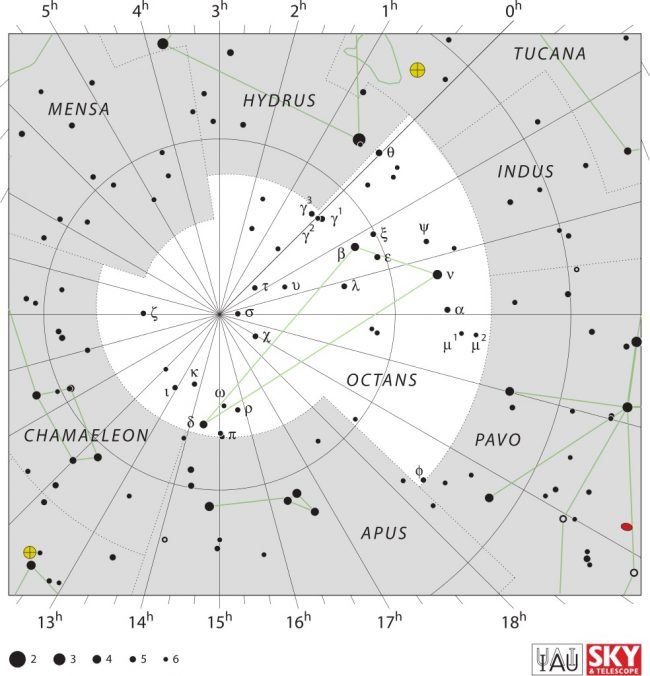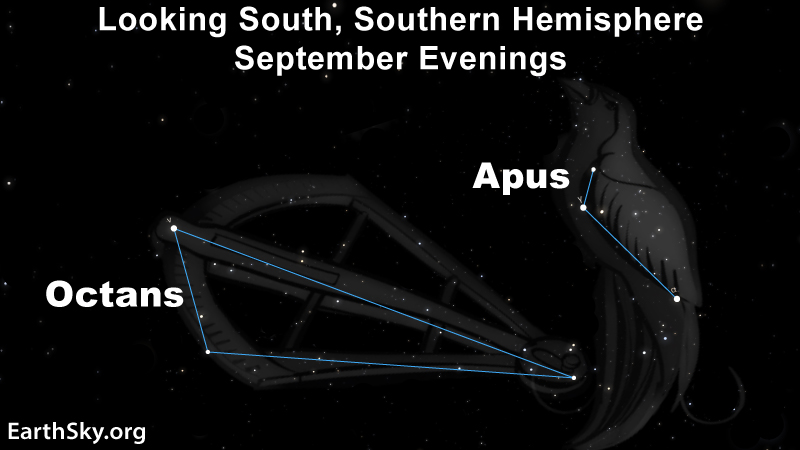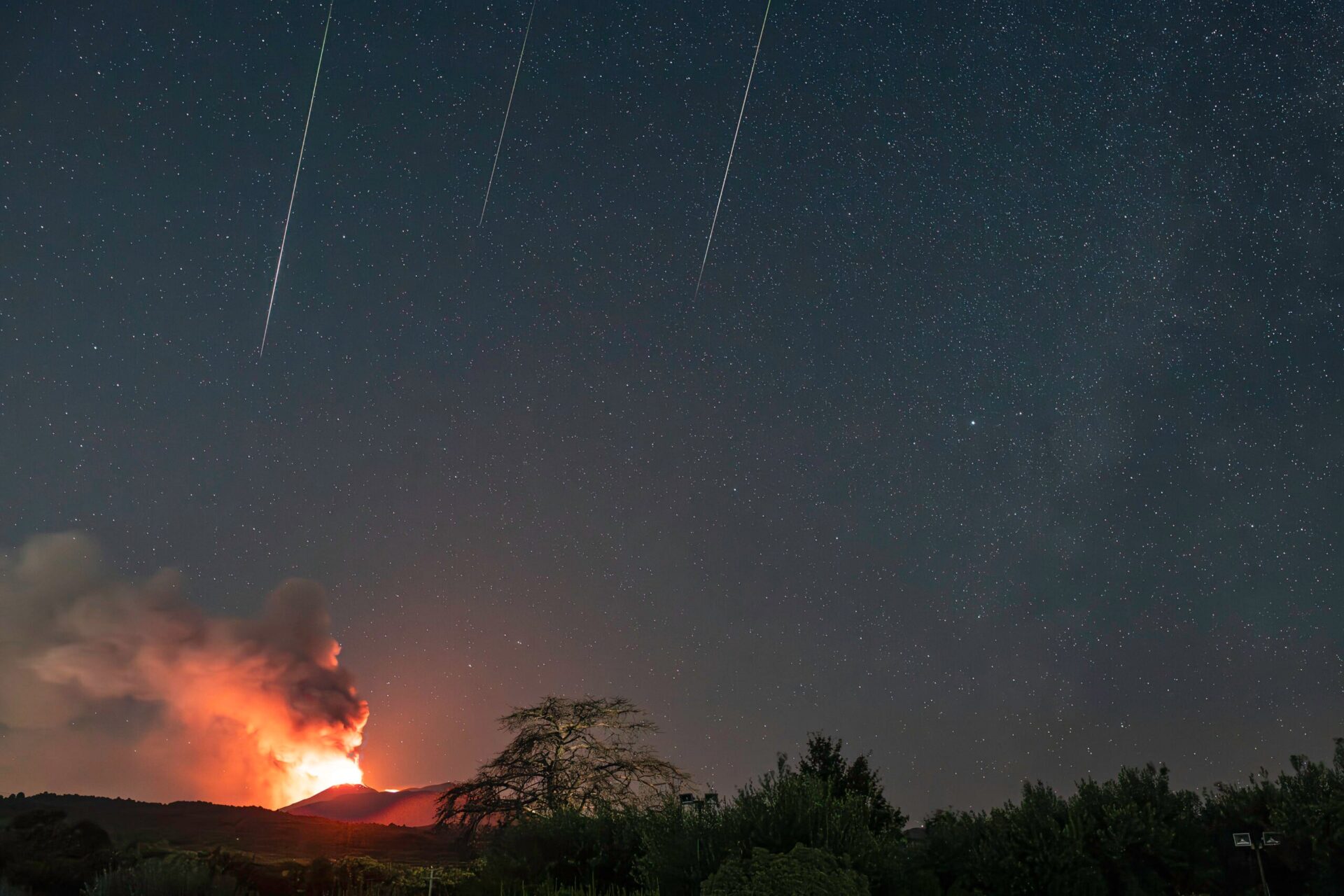*

Octans and Apus
Octans the Octant and Apus the Bird of Paradise circle the south celestial pole. If you want to see them, you’ll have to be in the Southern Hemisphere. In fact, the south celestial pole lies inside the constellation boundary for Octans.
Both of these constellations are south circumpolar constellations. Of course, the north has circumpolar constellations too. Constellations such as Ursa Minor, Ursa Major and Draco can be seen any night of the year from the Northern Hemisphere. Octans and Apus are two constellations that Southern Hemisphere observers can view on any clear evening.
Octans the Octant
Furthermore, the most important fact about Octans is that it contains the south celestial pole. While the Northern Hemisphere has Polaris marking the location of the north celestial pole, the Southern Hemisphere has no bright star to mark its celestial pole. However, there is an extremely dim galaxy that is nearly at the location of the south celestial pole. And that galaxy has the fitting name of Polarissima Australis. It shines at magnitude 13.5.
The brightest star in Octans is a middling magnitude 3.73: Nu Octantis. It lies 69 light-years away. The star may be home to a super-Jovian exoplanet.

Apus the Bird of Paradise
Then, next to Octans, is Apus the Bird of Paradise. It’s small and ranked 67th in size out of the 88 constellations. It lies between Octans and Triangulum Australe the Southern Triangle. The stars in Apus are quite dim. The brightest member of the constellation is Alpha Apodis at magnitude 3.83. Alpha Apodis lies about 430 light-years from Earth. Slightly fainter is Gamma Apodis at magnitude 3.86 and 150 light-years distant. This star is a strong source of X-rays.

Bottom line: Octans and Apus are two constellations that you have to be in the Southern Hemisphere to see. Plus, Octans is home to the south celestial pole.





No comments! Be the first commenter?